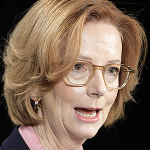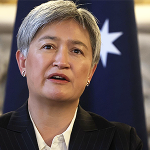Trump has variously made the case for support for domestic production of goods, like semiconductors, that are of military importance. He has also called for a reindustrialisation of the US by bringing back home the products that are at the backbone of a modern and militarily powerful economy: steel, aluminium, and vehicles.
In addition, he is pressuring gas importers to substitute Russian and other supplies (maybe Australian) for those from the US.
Finally, he has extolled tariffs as a virtue that enables the US to prosper with much lower levels of domestic taxes, a view that puts him on a collision course with almost all economic thinking ever since Adam Smith’s Wealth of Nations hit the bookshops in 1776.
The US is foreshadowing that its next round of tariff impositions (‘Liberation Day’ set for April 2) will focus on re-tilting the playing field against nations that Trump claims systematically subsidise exports to the US. He maintains that trade surpluses with the US are measures of this. The countries with the largest trade surpluses in 2024 were:
Australia normally runs a trade deficit with the US.
In a multinational trading regime, running a bilateral trade surplus is far from an indication of nations engaging in systemic practices that distort trade. And most countries’ trade surpluses with the US are somewhat offset by trade deficits in services (transport, insurance etc) – this for example reduces the EU’s $200 billion trade surplus with the US to a $54 billion current account surplus.
Trump is more convincing where his bluster is interpreted as a means of weakening distortions to free trade. Threatening trade policy retaliation is akin to the negotiating framework of the 1947 General Agreement on Tariffs and Trade (GATT). Under this, nations negotiated tariff reductions with each other that were locked-in and passed on to all other nations. With the exception of agriculture, the GATT framework proved a huge success in dismantling tariffs.
Current trade distortions are best measured by the OECD’s ‘Product Support Estimates’.
Overall levels of government support are low but in agriculture, they approach 20 per cent in the EU, reach over 50 per cent in Switzerland, and over 40 per cent in Japan. But all the averages mask high support in selected areas. Trump has railed against the protectionism that is impeding US agricultural exports to the EU, India, and others. He mentioned Canada’s 200 per cent de facto tariff on dairy (but not the 50 per cent plus US dairy tariff, still less the 300 per cent tariff on peanuts!).
Australia (which alongside New Zealand, is perhaps the world’s lowest cost agricultural producer) laboured for decades with only limited success to seek better access for food into the EU – and into the US and Japan. A Trump success in this area potentially opens great opportunities for Australian farmers – providing that domestic environmental, heritage, export, and Indigenous laws have not eroded the opportunities for expansion.
If, as he says, Trump’s objective is a sustained reduction of imports, then targeting particular national suppliers will fail in a world where businesses can source supply from different countries and where factories can be relocated. Hence policy must also include industry-specific measures. These were integral to the April 2 ‘Liberation Day’ for US trade but have now been deferred. Such measures pose a threat to Australian pharmaceutical exports, running at $2 billion a year – even though Australian imports from the US are greater – because the US regards Australia’s Pharmaceutical Benefits Scheme as unfairly suppressing the price of its exports.
Prevarication about industry-specific tariffs is an indication that the Trump Administration is unclear about its trade policy goals, the degree to which foreign suppliers are being advantaged by government subsidies and the ways of managing its strategic options.
Many within the Administration would be aware that a policy of fostering exports while reducing imports has in-built limiters. Every country’s balance of payments must balance. A trade and services surplus must be offset by a capital outflow or simply amassing gold and foreign reserves. Either way, reducing a trade and services deficit requires lower domestic consumption and higher domestic savings.
This links the US current account balance of payments deficit (4 per cent of GDP) to its Budget deficit over 6 per cent of GDP). The Budget deficit borrows from the future and boosts consumption rather than investment – $2 trillion of the current account surpluses of China and Japan are reinvested in US government bills that finance the budget deficit.
Of itself, Trump’s strategy of reducing imports and expanding exports would simply bring about a US dollar revaluation. Therefore, policy must also restrain US consumption, importantly by avoiding the need to sell government bonds and allowing higher savings to raise productivity through increased investment. Hence the importance of the Department of Government Efficiency (DOGE), which seeks annual savings of $1-2 trillion a year in Budget Reconciliation. This amounts to 15-30 per cent of federal spending (3-6 per cent of US GDP).
On past experience, the DOGE ambition is breathtaking. But then again so is Trump’s ambition, confused as it is, to reform the world’s trade policies. Australia doubtless has similar waste to that DOGE is revealing in US government spending. Eliminating it to reverse our post-2022 record as the OECD’s worst-performing economy would be vastly more beneficial than avoiding adverse Trump-induced trade outcomes.








